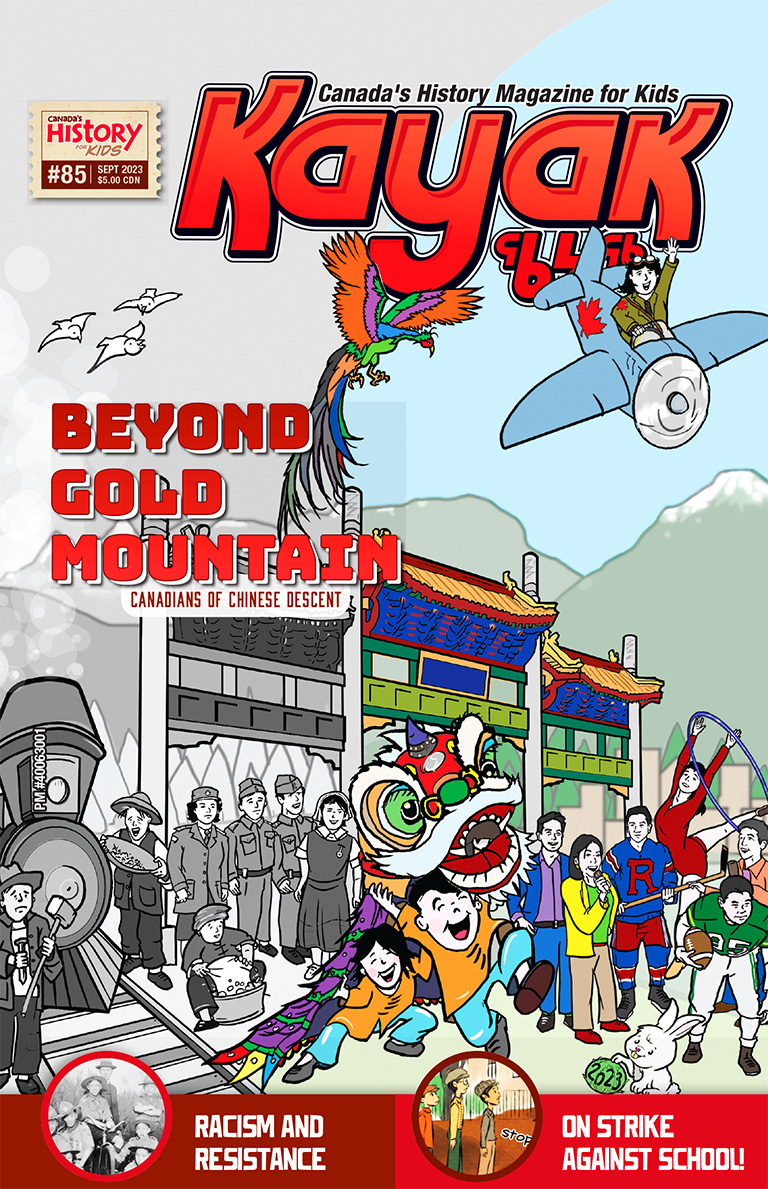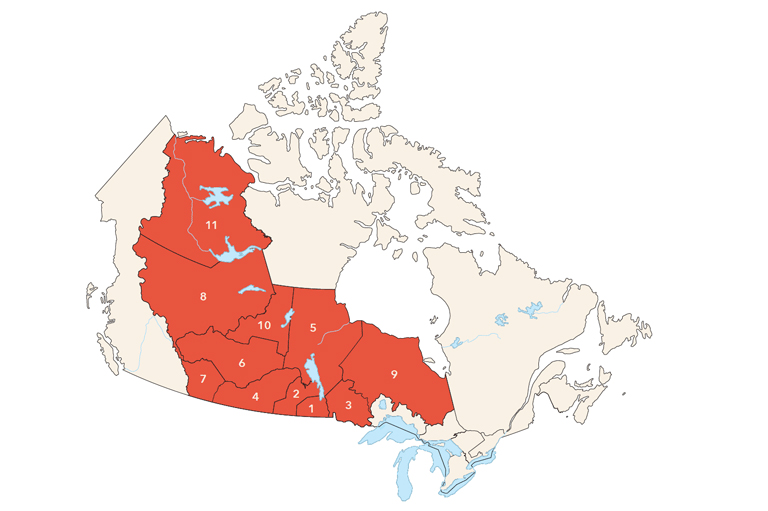Changemakers of Chinese Ancestry
Lesson Overview |
Grade Levels: 5/6, 7/8, 9/10 Subject Area: Social Studies, History, ELA Time Required: 1 lesson Magazine Issue: “Beyond Gold Mountain: Canadians of Chinese Ancestry,” Kayak: Canada’s History Magazine for Kids, September 2023 |
In this lesson, students will focus on the contributions of successful Canadians of Chinese ancestry and analyze the challenges that they have overcome and celebrate their successes. Students will use the “Beyond Gold Mountain” issue of Kayak: Canada’s History Magazine for Kids as a launching point into primary sources before exploring an individual of their choosing. |
Historical Thinking Concept(s) |
|
Learning Outcomes |
Students will…
|
Background Information |
| Gretta Jean Wong Grant was the first woman of Chinese descent to become qualified as a lawyer in Canada. Her father, Lem Wong, was born in 1881 near Canton (now Guangzhou) in Southern China. He immigrated to Vancouver in 1896, paying a $50 head tax to do so. With so few Chinese women in Canada at this time, he soon returned to China to seek a wife and married Toye Chin. Restrictions placed on Chinese men at this time meant that Lem Wong had to quickly return to Canada, while his new wife stayed behind in China. There, she gave birth to the couple’s first child in 1907. The family reunited when Toye and their son were finally able to afford to move to Canada in 1911. They settled in London, Ontario, where Lem opened a restaurant. “Wong’s Cafe” was quickly established as an elegant and popular place for the city’s professional class. Gretta was born in 1921 — the seventh of eight children. She and her siblings were active community members, attending church and participating in a variety of sports. Their father placed great emphasis on the role of education and most of the children eventually received a university degree. However, in the era of economic depression, it was a struggle for the family to cover all of the required tuition fees. When Gretta decided to enter law, a family friend helped her secure an articling position at a law firm in Toronto. There, Gretta experienced more racial discrimination than she was used to in the smaller city of London. For example, she had trouble renting an apartment because of her Chinese ancestry. At the law firm, Gretta and the other female students experienced different treatment than their male counterparts — being asked to run errands, do simple research and other administrative tasks, and not being invited to attend court hearings. The women formed a club called the Osgoode Women’s Legal Society (OWLS) and protested some of the unfair practices they experienced, with great success. Gretta was called to the bar in 1946. She married and raised a family, while maintaining an active and impactful legal career. |
Resources Required/Teacher Prep |
|
Primary Sources Used |
Warning about the use of language in the Primary SourcesThe language found in many of these primary sources includes terms and images that are considered offensive today. The teacher should review the use of these terms with students that were used in the time period of the primary source and the manner in which they should be treated today. |
|
Lesson Activity |
ACTIVATING
ACQUIRING
APPLYING
|
Possible Individuals |
|
Lesson Alternatives/Accommodations |
|
Possible Extension Activities |
|
Possible Assessment |
|









